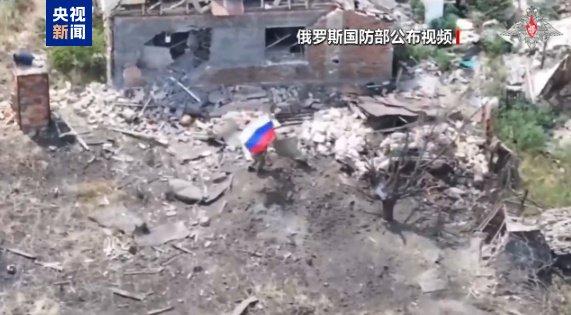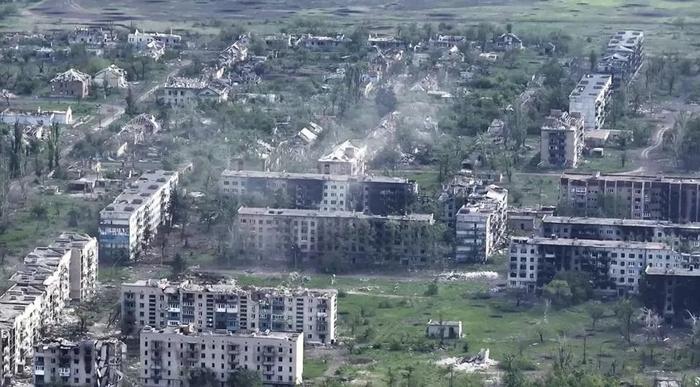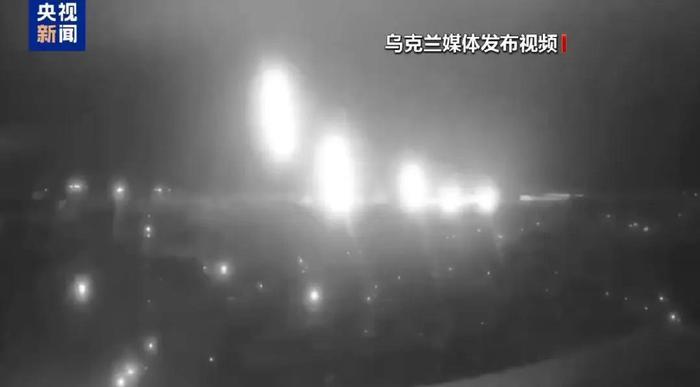



After 16 months of fierce battles, the key eastern Ukrainian city of Zaporizhzhia fell, leaving Ukraine’s strategic depth in the Donbas region at risk. The situation is dire for Ukrainian forces near another strategic stronghold, Bokolovsk (Russian: “Red Army City”). As Russian forces continue to advance on the battlefield, the United States’ anxiety surges. On August 1st local time, President Trump ordered the deployment of two nuclear submarines to “appropriate areas,” marking his first public military action to deter Russia since returning to the White House.
On the same day, Russian President Putin appeared to respond to Trump’s pressure, stating that the negotiations with Ukraine are “generally positive” and that all disappointment stems from unrealistic expectations. Putin also announced that the first batch of mass-produced “Zeltso” hypersonic missiles had been completed and delivered to the troops. The “Zeltso” missiles can carry nuclear warheads, and Russian media believe that Putin’s announcement is a powerful response to the US’s extreme pressure.
The US-Russia game has escalated to the point where it involves strategic weapons, coinciding with the last week before Trump sets a “final ceasefire deadline” for Putin. This reflects the US’s judgment that a significant turning point in the conflict with Russia is imminent: failing to intervene now could lead to a smooth future Russian advance.
The US continues to exert pressure on Russia, with Trump’s move to deploy nuclear submarines without warning.
President Trump stated on social media on August 1st that, given the highly provocative remarks by Russian Federation Security Council Deputy Chairman Medvedev, he had “ordered the deployment of two nuclear submarines to appropriate areas.” However, Trump did not reveal whether these submarines were equipped with nuclear weapons or conventional weapons. Furthermore, he did not specify the exact deployment area. Given the sensitivity of nuclear submarines in their nuclear deterrence missions, the US military rarely discusses related deployments and locations publicly.
Virginia-class Nuclear Submarine Rendering Source: U.S. Department of Defense
Trump’s comments on Medvedev, targeted at the end of last month, can be traced back to July 28. On that day, Trump expressed his “extreme disappointment” towards Russian President Putin and is reducing the previously set deadline of 50 days for reaching an agreement between Russia and Ukraine. The U.S. confirmed in a Security Council meeting on July 31 that Trump’s “final deadline for completing the peace talks between Russia and Ukraine” is August 8.
Russian Federal Security Service Vice Chairman Medvedev immediately accused Trump of playing a “threat game,” reminding him that “Russia still retains its ultimate nuclear strike capability from the Soviet era.” Medvedev stated that no matter whether it’s 50 days or 10 days, each new “threat” is further advancing the war.
International security experts believe that Trump’s move is an escalation of the “tongue-twister game” with Russia, but it may not necessarily be an escalation of military action, as the nuclear submarines already deployed by the United States possess the capability to strike Russia.
In reality, the strength of Russia’s submarine fleet is quite impressive, with exact numbers classified as secret. According to estimates provided by the U.S. Nuclear Threat Initiative in August 2024, there are 64 such submarines, but some analysts believe this figure is significantly underestimated. From June 12 to 17 last year, a Russian naval fleet visited Cuba, where the “Kazan” class attack submarine “Yaroslavl” made its appearance at Havana Port, just 180 kilometers from the U.S. coast.
Putin’s alleged response to Trump’s pressure
and announced mass production of “Cherry Blossom” missiles for delivery to troops
In addition to deploying nuclear submarines as a pretext for responding to Medvedev, on July 31, Trump also criticized Russia’s missile and drone attacks against Ukraine as “disgusting,” stating he was preparing new sanctions against Russia but was uncertain if they would be effective, and mentioned that U.S. Middle East envoy Vance will visit Russia in the coming days.
The Youth League Truth Daily in Russia analyzed that Trump might attempt to “investigate Russian positions” through the visit of Witkov to Russia. This would be due to the potential damage to his self-proclaimed “global leader” authority if the sanctions against Russia fail to achieve their intended effect, which may be one of the reasons he has been reluctant to make a final decision in the past.
On August 1st, after meeting with the visiting Belarusian President Lukashenko on Walam Island, Putin responded to questions, stating that Russia’s military objectives in Ukraine remain unchanged. The recent Russia-Ukraine negotiations held in Istanbul were “generally positive,” but any disappointment stems from “excessive expectations,” hinting at Trump’s pressure.
Russian President Vladimir Putin met with Belarusian President Alexander Lukashenko on Walam Island.
Putin also mentioned that the first mass production version of Russia’s newest hypersonic medium-range ballistic missile, “Zeltse,” had been completed and delivered to the troops. Leaders of both countries also discussed plans for deploying the “Zeltse” missile complex in Belarus. Putin stated that military experts have selected the deployment site for the “Zeltse” missile system, and preparations are currently underway.
On November 21 last year, Russia used the “Zeltse” medium-range ballistic missile, capable of carrying nuclear warheads, to strike a factory in the southern machine manufacturing research and production unit of Ukraine, displaying a “apocalyptic scene.”
In November 2024, during the “Zeltse” missile attack in Dnipropetrovsk, Ukraine.
Russia claims that the “Zeltse” missile can reach a range of 5500 kilometers. The Ukrainian Ministry of Defense’s Intelligence Directorate assessed that the flight time from launch to hitting the target is 15 minutes. The missile carries six warheads, each equipped with six submunitions.
Due to the Western air and missile defense systems being unable to intercept the “Chestnut” missile, this system has become Russia’s “big stick” against NATO without resorting to nuclear weapons.
Russian media claim that the range of the “Chestnut” missile includes any European city.
According to an analysis by Russian military analyst and editor-in-chief of the “Defense” magazine, Igor Korotchenko, the news of mass production of the “Chestnut” missile system is a response to Western pressure from Putin. This indicates that Russia will continue to resolve the Ukrainian conflict according to its previous basic principles, without any changes. Russia is fully prepared to defuse any threats from NATO and European countries.
The Russian military’s capture of a major town in eastern Ukraine has brought about a significant turning point in the Donbas battlefield. The situation at the start of April last year at the town of Chersonovka in eastern Ukraine has undergone significant changes recently. On August 1st, Putin personally confirmed that the Russian military was advancing along the combat contact line, having completely controlled this Donetsk region’s major town several days ago. Putin stated that the Ukrainian leadership was not aware of the situation on the frontline, hence they denied the news that the Russian military had taken control of Chersonovka.
It is reported that this pre-war population exceeded 12,000 people town has been destroyed. The Russian military began advancing towards Chersonovka in late spring of 2024. Due to complex terrain and unique buildings and infrastructure, Chersonovka once became one of the most fortified defensive positions for Ukrainian forces in the Donbas region. Aravdinov, Deputy Director of the Military-Political Department of the Armed Forces of Russia, said that with the Russian military controlling Chersonovka, the Ukrainian forces’ defensive system on this direction has been breached, providing strong support for the next steps of the Russian military.
The loss of Chersonovka marks a significant turning point in the battle of Donbas for the Russian military, also exerting significant pressure on the southwest of Chersonovka, which is 60 kilometers away, known as “Red Army City” (Russian).
According to recent news from both Russia and Ukraine, the Russian military has been frequently launching attacks on “Red Army City,” even releasing videos of their advances into the city.
Before the escalation of the conflict between Russia and Ukraine, “Red Army City” had a population of about 61,000, serving as the center of Ukraine’s coal industry and also a logistic hub for Ukrainian forces, with multiple railways and roads passing through it. Previously, Ukrainian media pointed out that if Russia were to capture the “military stronghold” that Ukrainian forces have defended for over three years, it would cut off the supply lines for Ukrainian forces, potentially leading to the collapse of their entire defensive line.
If “Red Army City” falls, the terrain westward will become flat, leaving no defenses in sight from Eastern Ukraine to Central Ukraine. This provides us with an understanding of the underlying reason behind Trump’s deadline for completing the Russia-Ukraine peace talks: by then, Russia will have occupied Eastern Ukraine, and Ukraine will have nowhere left to retreat. If the US does not act now, its leverage will truly be limited.